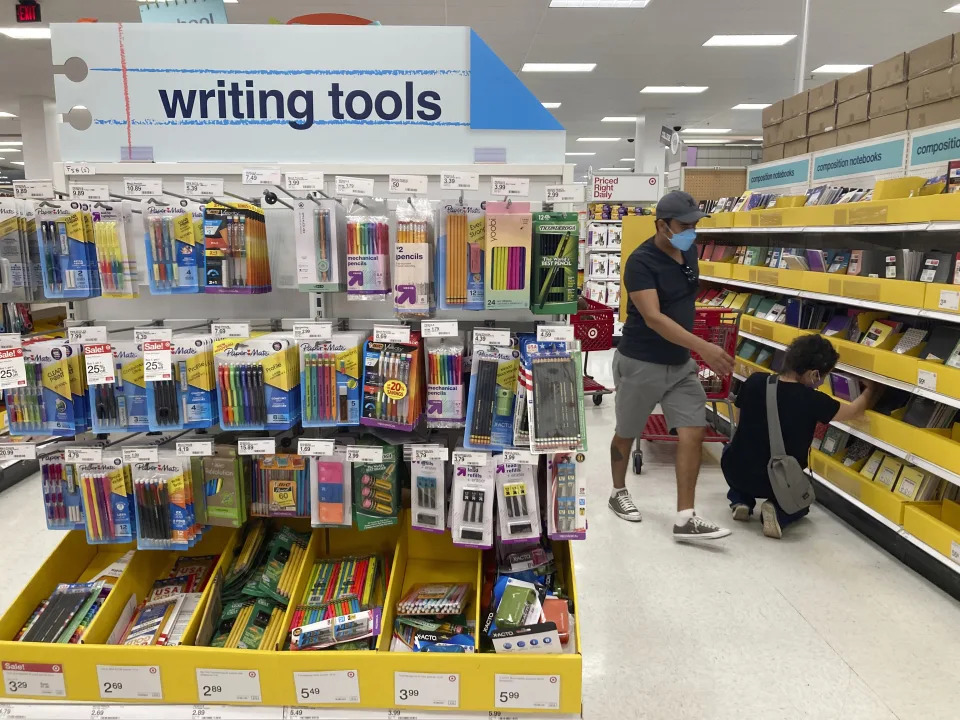News
Back-to-school shopping: 6 tips for maximizing your budget
The time for back-to-school shopping is approaching, and the average household is expected to spend roughly $875 for back-to-school expenses — the second-highest amount on record.
With cost a factor, there are opportunities to reduce both cost and stress. Here are some of the most useful tips to give your children a successful first day of school while keeping your finances in check.
Set a budget
Start by determining a budget that fits your financial situation, using last year’s back-to-school expenses as your benchmark and spending limit. This will help prevent overspending and ensure that you only purchase what is necessary.
It's not uncommon to feel financial strain for school supply shopping. Nearly 70% of families surveyed by Deloitte cited higher prices as the main reason for spending less on back-to-school items this year, while 47% mentioned having less disposable income.
A sinking fund
A sinking fund is money that is set aside from a budget each month with the goal of paying for a large future expense or debt. In this case, the money would be shelved for back-to-school shopping.
Essentially, it's a monthly expense category within your budget and it can be kept in several types of bank accounts, including your savings account or checking account , a money market account , or a certificate of deposit (CD).
Take stock of what you already have
Before rushing to the store, take a close look at your child’s school's supply list and compare it against items you already have at home. This will help you narrow down what still needs to be purchased.
Check with the school to prioritize items that are required on the first day of school and delay buying non-essential items that can wait until later.

According to Katherine Cullen, the NRF’s vice president of industry and consumer insights, families should focus on ensuring their kids have the basics covered: clothes, shoes, backpacks, electronics, and school supplies .
Electronics, such as laptops, represent the largest portion of the back-to-school budget, averaging approximately $309 per household. Clothing, accessories, school supplies, and shoes also constitute significant portions of the budget.
Shop smart and early
Most families begin their back-to-school shopping three weeks to a month before school starts .
However, starting earlier can provide more opportunities to save. Take advantage of sales promotions and tax-free holidays throughout the year to spread the cost across multiple paychecks, or use your sinking fund. (NRF data shows that spreading expenses over time is often more appealing than actual discounts.)
Though shopping online is still the most popular option, according to the NRF, beware of additional costs. Cullen suggested that it might be more economical to purchase items online and pick them up in-store or to opt for slower, less expensive shipping methods. Additionally, always check return policies to avoid unexpected costs.
Embrace secondhand shopping
Consider purchasing secondhand items, especially when it comes to apparel and backpacks.
A growing number of families and Gen Z students, in particular, are open to buying gently used items to cut costs and shop sustainably.
Buy in bulk and collaborate
Buying school supplies in bulk or partnering with other K-12 families to purchase items together can also help reduce costs.
Summer sales and clearance events offer great opportunities for bargains. Look out for families and schools organizing exchanges for old uniforms and school supplies, providing another way to save.
While getting a head start on next year’s shopping may be tempting, Cullen advised caution.
“For many consumers, storing that item and finding space in your home to keep it and make sure you don't lose track of it can be a challenge," she said, "as well as the fact that it's difficult to predict a child's growth … and so some of those things can be difficult to buy this far in advance.”

If you cannot stretch your finances to cover this year’s school supply list and meet the income limits, consider reaching out to your local chapters and websites from the following:
—

